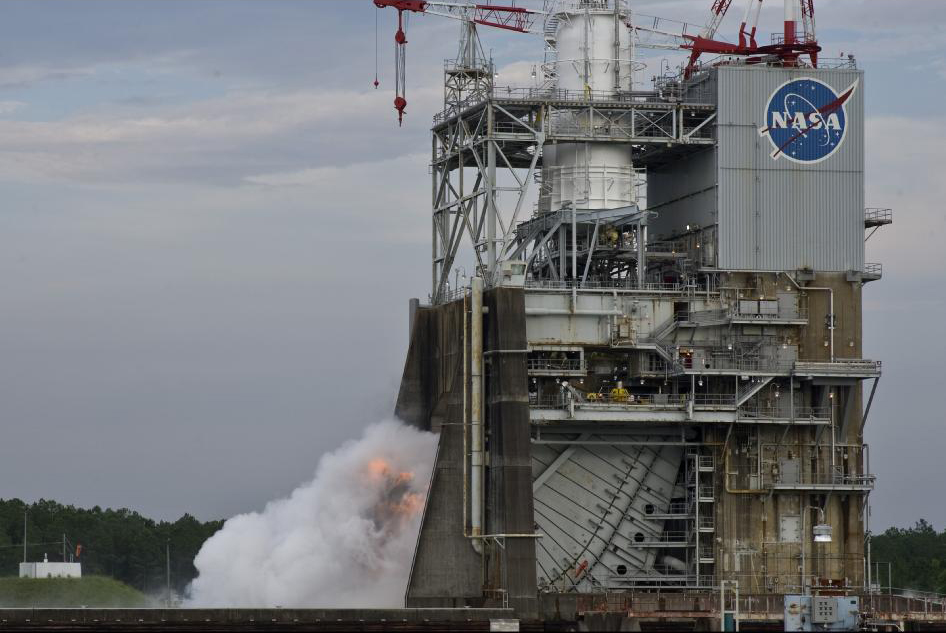May 10, 2011 Vol. 4, Issue 3
Young professionals from NASA and academia shared their experiences and perspectives at Masters Forum 20.
“The young professionals that are here today are a great representation of what’s in our workforce,” said Heather Rarick, flight director for the International Space Station and panel chair. As the agency continues to face not only technical challenges, but also budget and international challenges, the next generation has a lot to overcome. “Feel comforted that we have some great talent to bring us to the next milestone in space exploration,” said Rarick.
According to findings in the 2010 Aviation Week Young Professionals Study, there is an age gap and, consequently, a leadership gap in the aerospace industry, explained Carole Hedden, special projects editor for Aviation Week. “You’re going to have to step up with a broader set of skills faster because of that gap,” she said. Young professionals want to stay in aerospace, but needs related to student loans, family, and development opportunities must be met by employers. “Most young professionals plan to stay in this industry,” said Hedden. “They’re not planning on leaving if we can keep them here.”
“I really feel that the NASA workforce specializes in the impossible and we want to attract people, the top talent to be able to do this,” said Nick Skytland, director of NASAs Open Government Initiative.
Echoing Hedden’s presentation, he noted that while wage and security needs might be adequately satisfied, the next generation workforce wants the opportunity to succeed and grow. This calls for developing an environment in which ideas can flow, innovation thrives, and experimentation is allowed. Create this, said Skytland, “and the result is that people are empowered, they are connected with their organization, and they’re willing to stay there forever because they love what they do.”
The panel also featured Philip Harris, an international operations engineer at JSC and Annie Caraccio, chemical engineer at KSC, who shared their stories as the youngest panelists. Harris is part of the project management team for the ISS Live project set to be released this fall. With only six months of experience, Harris is excited to have the opportunity to work with people who have decades of experience. Overcoming the paradox of needing experience to get experience is a great challenge for the young professional community. Harris hopes to see this change. “I may not have all the experience that you do, but if you get me involved, I am going to ask questions, I am going to learn from you because our generation has a real thirst for knowledge.”
For Caraccio, current challenges for the next generation workforce include organizational uncertainty and attitude, getting the public engaged, and being given changes to develop as leaders. “I understand that you need to get your feet wet, you need to prove that you’re capable,” she said, “but I think it’s important to have a healthy transition of young professionals into [leadership positions].”
“Young professionals at NASA need a gravity assist of sorts,” said Justin Kugler, utilization relationship manager for the International Space Station National Laboratory. Kugler is one of several members of the newly formed NASA Forward group geared towards empowering forward thinkers within the agency to collaborate, discuss, and engage with one another. “We all have important perspectives, important lessons,” explained Kugler. “[NASA Forward] is brought together by this idea that we can be resources for each other.”
Danielle Wood, doctoral candidate at the Massachusetts Institute of Technology, who has traveled to space programs in Nigeria, South Africa, United Arab Emirates, Thailand, and Korea, provided a broader, young professional perspective on space exploration. “The global space community is changing. Many new players are going to be coming in,” she said. “The way we think about who is in space, who is creating space technology and is innovating, it’s different and going to change.” As a young professional coming from the academic world, she hopes to be able to find ways to incorporate her policy, management, and engineering background into space exploration at this level.
The final presentation offered an overview of the NASA Academy’s Young Professionals Initiative. The initiative aims to meet the development and training needs of the young professional workforce at NASA through its courses, knowledge sharing events, and storytelling. “We often talk about reaching out to the young professional community or the need to transfer knowledge to the next generation,” said Haley Stephenson, the Young Professionals Initiative lead for the NASA Academy. “That won’t happen unless they are in the room, unless they are participating and engaged. That’s something we’re looking to accomplish.”
The audience had the opportunity to engage in conversation with the panelists. NASA giants such as Phil Sumrall and Russel Rhodes offered their encouragement to the panelists to continue to go forward and not to hesitate when seeking advice from a “grey beard.” However, after all of the discussion about young professional challenges it was one light-hearted truth from an engineer from Marshall Space Flight Center who summed up the challenge to the older generations. “It’s been a while since I’ve encountered a young professional,” she said. “I feel the future of NASA is in great hands and I want to thank you because you’ve given me a challenge now….The challenge to me now is to view the future of NASA as what I can do to further the best environment for you guys, the best attitudes to have, how to encourage you, and how to help make the forward path.”






